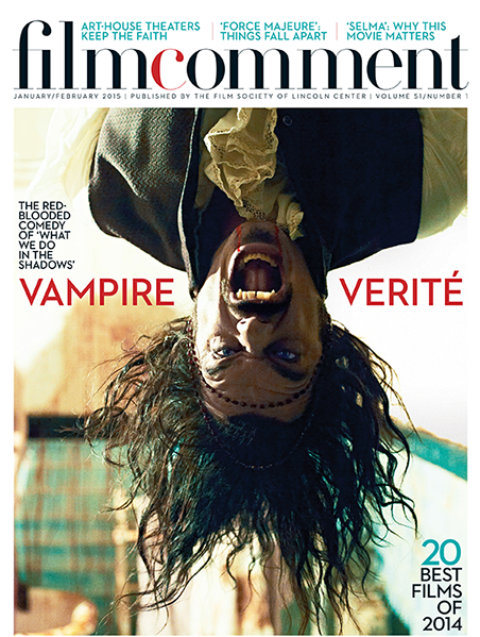
Tip Top begins with a white man entering a suburban French bar frequented by Algerian immigrants and unleashing a torrent of homophobic and racist insults, then hailing random figures from across the political spectrum. The bar’s patrons take him down in a single-shot rumble so finely choreographed that it passes for total chaos until the room clears and you realize the last man standing is a dog. While the notoriously opinionated filmmaker-critic Serge Bozon’s third feature begins with this hilarious provocation, the film is more startling than shocking, keeping the viewer in a state much like that of Sally Marinelli (Sandrine Kiberlain), a stork-like internal affairs inspector who jumps out of her skin every time her staccato new partner Esther Lafarge (Isabelle Huppert) makes a sudden move. Ending scenes with the abruptness of a judge bringing down his gavel and cutting from barely decipherable night shots to blinding white walls, Bozon keeps us in a state of anxious receptivity, a degree of attention amply rewarded by Tip Top’s complex layers of meaning and risqué pleasures.
At first glance, Tip Top makes good on the promise of the title of Bozon’s previous feature La France, which the 2007 film itself only obliquely fulfilled: through the investigation of the murder of a French Algerian police informer outside Lille, Bozon and his co-writer Axelle Ropert seem to provide a mid-decline portrait of France through its institutions, media, and uneasy mix of ethnicities. But within the narrow confines of its Academy ratio and B-movie economy of means, the film delves deeper, confounding expectations all the way. For better and for worse, the driving force in this France as bureaucratic as it is corrupt, is love, and despite the opening setup of racial confrontation, most of the couples we encounter are casually multiracial. In fact, the main assimilation here is that of Sally mimicking Esther’s style choices, then gradually embracing her way of getting her kicks (quite literally).

As with the Golden Age American B-movies Bozon admires, Tip Top’s primary concern is not with identifying the bad guy—an uncharacteristically emphatic shot and unpleasant facial tic quickly establish the culprit—but with smuggling in as much additional information as possible, including televised images of the unfolding Arab Spring. Using a limited range of cool colors and defining each of the film’s primary locations with a recurrent camera angle, Bozon gives Tip Top an obsessive feel that reaches a visually abstract, emotionally haunting level with repeated over-the-shoulder shots of an obscured figure watching from a high-rise window. While this density of atmosphere is reminiscent of the whispered chillers of Jacques Tourneur, Tip Top also serves as an inventory of cinematic comedy, all too rare in contemporary French art film, though Bruno Dumont’s Li’l Quinquin helps fill the void. Tip Top has room for everything from a uniquely inventive brand of straight-faced wacky dialogue to non-sequitur physical comedy that sometimes verges on the outrageous: Huppert revels in shattering her severe image by shoveling scrambled eggs off her dashboard and into her mouth or eagerly sticking her tongue out to catch a drop of blood rolling down the bridge of her nose.
Which brings us to the sex stuff. Inspector Marinelli is a Peeping Tom and Inspector Lafarge is into BDSM. These twists resonate uncomfortably as metaphors for police work, but are profoundly funny—and liberating—as character traits. If Tip Top’s romantic undercurrent is “people will do anything for love,” its subversive conclusion is in its definition of “anything” and how kink may be the best antidote for murder.








